کتاب شیمی معدنی پارسل – کاتز (purcell-katz)
توضیحات محصول
مشخصات فایل دانلودی کتاب پارسل کاتز»
نوع فایل : پی دی اف
تعداد صفحات : 1134
کیفیت : اسکن با کیفییت بسیار بالا
حجم فایل : 657 مگابایت
- کلینیک تخصصی علوم ایران
- ارسال توسط فروشگاه
- گارانتی اصالت و سلامت فیزیکی کالا
- ضمانت تعویض کالا
- دارای نماد اعتماد و مجور نشر دیجیتال
۱,۰۰۰,۰۰۰تومان Original price was: ۱,۰۰۰,۰۰۰تومان.۹۰,۰۰۰تومانCurrent price is: ۹۰,۰۰۰تومان.
کتاب شیمی معدنی پارسل – کاتز (purcell-katz)
مقدمه ای بر کتاب شیمی معدنی پارسل-کاتز (purcell-kotz)
دوستان کتاب شیمی معدنی پارسل کاتز یکی از بهترین کتاب های شیمی معدنی است که در دانشگاه های مختلف تدریس می شود. تیم کلینیک تخصصی علوم بنا به نیاز دانشحویان عزیز اقدام به اسکن تمامی صفحات کتاب پارسل کاتز کرده تا این کتاب را به علاقه مندان تقدیم کند . در ضمن پس از اسکن کتاب جهت راحتی شما ، تمامی صفحات کتاب شیمی معدنی پارسل کاتز OCR شده تا قابل جستجو باشد.
فهرست مطالب کتاب پارسل – کاتز (purcell-kotz)
فهرست مطالب کتاب شیمی معدنی پارسل کاتز را در ادامه میبینیم.
۱
USEFUL ATOMIC CONCEPTS • • • • • • • • • • • • • • • • • • • • • • • • • • • • • • • • • • • • • • ۱۲
۲
Probability Density Functions ………………………………. 13
The Electron as a Matter Wave. . . . . . . . . . . . . . . . . . . . . . . . . . . . . . . . ۱۳
Probability Density Functions …………………………… 17
Radial Density Functions and Orbital Energies …… . . . . . . . . . . . . 18
Angular Functions and Orbital Shapes . . . . . . . . . . . . . . . . . . . . . . . . . . ۲۵
Total Density Functions ……………………………….. 30
Polyelectronic Atoms ……………………………………… 33
Atom Electron Configurations and the Long Form Periodic Table. 33
Slater Orbitals and Their Uses . . . . . . . . . . . . . . . . . . . . . . . . . . . . . . . . . ۴۴
Atomic Configurations and Atomic Terms. . . . . . . . . . . . . . . . . . . . . . . ۴۷
Atom and Orbital Electronegativities ……………………… 54
Epilog . . . . . . . . . . . . . . . . . . . . . . . . . . . . . . . . . . . . . . . . . . . . . . . . . . . . . . . . . . . ۶۰
Appendices to Chapter I …………………………………… ۶۱
A. Hydrogen Type Wavefunctions
B. First Ionization Potentials of the Main Group and
Transition Elements
C. Electron Affinity Values of the Elements
BASIC CONCEPTS OF MOLECULAR TOPOLOGIES. . . . . . . . . . . . . . . . . . ۶۴
Shared and Lone Pairs and Lewis Structures .. . . . . . . . . . . . . . . . . . . . . . . ۶۵
Electron Pair Repulsion Model. . . . . . . . . . . . . . . . . . . . . . . . . . . . . . . . . . . . . ۷۵
Symmetry Concepts ………………………………………. 82
Point Groups ………………………………………… 82
Character Tables … . . . . . . . . . . . . . . . . . . . . . . . . . . . . . . . . . . . . . . . . . . ۸۹
..
VII
viii ۰ CONTENTS
Epilog . . . . . . . . . . . . . . . . . . . . . . . . . . . . . . . . . . . . . . . . . . . . . . . . . . . . . . . . . . . ۹۵
Appendix to Chapter ۲ . . . . . . . . . . . . . . . . . . . . . . . . . . . . . . . . . . . . . . . . . . . . ۹۶
Point Group Character Tables
۳
THE DIRECTED ATOMIC ORBITAL VIEW OF CHEMICAL BONDS • • • • • ۹۸
Directional Atomic Orbitals ………………………………… ۹۹
Molecular Properties Conveniently Interpreted with the Directed
Atomic Orbital Concept. . . . . . . . . . . . . . . . . . . . . . . . . . . . . . . . . . . . . . . .. ۱۰۷
Bond Distances ………………………………………. ۱۰۸
Force Constants. . . . . . . . . . . . . . . . . . . . . . . . . . . . . . . . . . . . . . . . . . . . .. ۱۱۰
Dipole Moments ………………..…………………….. ۱۱۴
Nuclear Spin Coupling. . . . . . . . . . . . . . . . . . . . . . . . . . . . . . . . . . . . . . .. ۱۱۷
Bond Energies ……………………………………….. 119
Epilog. . . . . . . . . . . . . . . . . . . . . . . . . . . . . . . . . . . . . . . . . . . . . . . . . . . . . . . . . .. ۱۲۴
۴
THE UNDIRECTED ORBITAL VIEW OF CHEMICAL BONDS. . . . . . .. . .. ۱۲۶
۵
Introductory Comments. . . . . . . . . . . . . . . . . . . . . . . . . . . . . . . . . . . . . . . . . .. ۱۲۷
Molecular Orbital Probability Functions ………………………. 130
Principles of MO Construction and Interpretation… . . . . . . . . . . . . . . . . . .. ۱۳۴
The Hydrogen Molecule ……………………………….. 134
Beryllium Hydride and Hydrogen Chloride. . . . . . . . . . . . . . . . . . . . .. ۱۳۵
Summary ……………………………………………. 140
Main Group Diatomic Molecules. . . . . . . . . . . . . . . . . . . . . . . . . . . . . . . . . .. ۱۴۱
Homonuclear Molecules ……………………………….. , ۱۴۱
The pSU’, p7T Order Controversy …………………………. ۱۴۵
Heteronuclear Molecules . . . . . . . . . . . . . . . . . . . . . . . . . . . . . . . . . . . . . . ۱۴۷
Structure, YSEPR, and LCAO-MO . . . . . . . . . . . . . . . . … . . . .. . . … … ۱۴۹
The EF3 Series . ………… , ” ……………….. , . . . .. . . … ۱۵۱
The EF4 Series . ……………….. ” …….. ” … . . . .. . . .. .. ۱۵۳
“Linear” (One- Dimensional) Molecules ………………………. 155
Cyclic (Two- Dimensional) Molecules. . . . . . . . . . . . . . . . . . . . . . . . . . . . . .. ۱۵۸
Polyhedral (Three- Dimensional) Molecules. . . . . . . . . . . . . . . . . . . . . . . . .. ۱۶۳
Stratagem. . . . . . . . . . . . . . . . . . . . . . . . . . . . . . . . . . . . . . . . . . . . . . . . . . . . ۱۶۳
EX ۳ (D ۳۱۱ ) • • • • • • • • • • • • • • • • • • • • • • • • • • • • • • • • • • • • • • • • • • • • • • • • • • •• ۱۶۴
EX۴ (Td)’ .. . . .. .. . . .. . . .. . . . . .. . . .. .. . . .. . . . . .. .. . . … . .. .. .. ۱۶۹
EXs (D 3h ) … ” ………………………………………. , ۱۷۱
EX۴ (D 4h ) . . . .. . . . . . . . . . . .. . . . . . . . . . .. . . . . . . . . . . . . .. . . .. . . . . .. ۱۷۴
EXs (۰۱۱) ……………………………………………. ۱۷۷
The Equivalence of the Localized and Delocalized Models. . . . . . . . . . . . ۱۸۳
Epilog. . . . . . . . . . . . . . . . . . . . . . . . . . . . . . . . . . . . . . . . . . . . . . . . . . . . . . . . . . . ۱۸۵
THE DONOR/ACCEPTOR CONCEPT
• • • • • • • • • • • • • • • • • • • • • • • • • • • • • • • • ۱۸۶
Introduction …………………………………………….. ۱۸۶
Survey of Adduct Types …………………………………… 188
۶
CONTENTS 0 ix
Acidic and Basic Hydrogen. . . . . . . . . . . . . . . . . . . . . . . . . . . . . . . . . . .. ۱۸۸
Non-Metal Acids and Bases…………………………….. ۱۹۴
Boron and Aluminum ……………………. . . . . . . . . . . .. ۱۹۴
Carbon and Silicon ………………………………… ۱۹۶
Nitrogen and Phosphorus. . . . . . . . . . . . . . . . . . . . . . . . . . . . . . . . .. ۲۰۳
Oxygen and Sulfur. . . . . . . . . . . . . . . . . . . . . . . . . . . . . . . . . . . . . . .. ۲۰۵
Halogens ………………………………………… ۲۰۹
Xenon. .. . . . . . . . . . . . . . . . . . . . . . . . . . . . . . . . . . . . . . .. . . . . . . . . . ۲۱۲
Metals . ……………………………………. , . . . . . . . . .. ۲۱۳
Acid-Base Strengths ….. . …………………………………. ۲۱۶
The Thermodynamic Definition ……………… .. ……. . …. ۲۱۶
Quantitative Prediction of Relative Adduct Stabilities ………… ۲۱۸
Illustrative Interpretations. . . . . . . . . . . . . . . . . . . . . . . . . . . . . . . . . . . .. ۲۲۵
Proton Affinities. . . . . . . . . . . . . . . . . . . . . . . . . . . . . . . . . . . . . . . . .. ۲۲۶
(CH3hN, (SiH3hN . . . . . . . . . . . . . . . . . . . . . . . . . . . . . . . . . . . . . . .. ۲۲۸
Picolines . . . . . . . . . . . . . . . . . . . . . . . . . . . . . . . . . . . . . . . . . . . . . . . .. ۲۲۹
Et3N, HC(C۲ H۴hN … . . . . . . . . . . . . . . . . . . . . . . . . . . . . . . . . . . .. ۲۲۹
Me3N’MMe3, M = B, AI, Ga, In ……………………. ۲۲۹
1T Resonance Effects . . . . . . . . . . . . . . . . . . . . . . . . . . . . . . . . . . . . .. ۲۳۰
BF::::Me3– X ……………………………………….. ۲۳۲
Retrodative Bonding ………………………………. , ۲۳۲
An Acid-Base View of Solvation Phenomena. . . . . . . . . . . . . . . . . . . . . . .. ۲۳۵
Liquid Ammonia ……………………………………… ۲۴۱
Hydrofluoric and Sulfuric Acids. . . . . . . . . . . . . . . . . . . . . . . . . . . . . . .. ۲۴۹
Sulfur Dioxide ……………………………………….. ۲۵۵
HS03F and Superacids . . . . . . . . . . . . . . . . . . . . . . . . . . . . . . . . . . . . . . .. ۲۵۹
Epilog. . . . . . . . . . . . . . . . . . . . . . . . . . . . . . . . . . . . . . . . . . . . . . . . . . . . . . . . . .. ۲۶۳
ENERGETICS AND STRUCTURES AS GUIDES TO MAIN
GROUP CHEMISTRY. . . . . . . . . . . . . . . . . . . . . . . . . . . . . . . . . . . . . . . . . . . . . .. ۲۶۴
Free Energy, Reaction Potential, and Equilibrium. . . . . . . . . . . . . . . . . . .. ۲۶۵
Review . . . . . . . . . . . . . . . . . . . . . . . . . . . . . . . . . . . . . . . . . . . . . . . . . . . . .. ۲۶۵
Estimation of Reaction Spontaneity. . . . . . . . . . . . . . . . . . . . . . . . . . . .. ۲۶۶
The Non Sequitur” Stability” ……………………….. ۲۶۷
Heats of Reactions from Bond Energies. . . . . . . . . . . . . . . . . . . .. ۲۶۸
Higher Oxidation State Stabilization . . . . . . . . . . . . . . . . . . . . . . .. ۲۷۱
A Caveat Concerning Condensed Phase Reactions. . . . . . . . . .. ۲۷۴
Metal-Containing Solids. . . . . . . . . . . . . . . . . . . . . . . . . . . . . . . . . . . . . . . . . .. ۲۷۶
Lattice Energies . . . . . . . . . . . . . . . . . . . . . . . . . . . . . . . . . . . . . . . . . . . . .. ۲۷۶
Structure and Stoichiometry …………………… . ………. ۲۷۹
Structure and the Concept of Ion Radii …………. . . . . . . . . . . .. ۲۸۳
Layer Lattices and Incipient Covalency. . . . . . . . . . . . . . . . . . . . . . . .. ۲۸۶
Synthesis Principles. . . . . . . . . . . . . . . . . . . . . . . . . . . . . . . . . . . . . . . . . .. ۲۹۰
Cation Oxidation States . . . . . . . . . . . . . . . . . . . . . . . . . . . . . . . . . .. ۲۹۱
Ionic Fluorinating Agents …………………………… 292
Ion Size and Compound Isolation from Solution . . . . . . . . . . . .. ۲۹۳
Metals. . . . . . . . . . . . . . . . . . . . . . . . . . . . . . . . . . . . . . . . . . . . . . . . . . . . . .. ۲۹۶
Structures and Bonding …………………………….. ۲۹۶
Oxidative Stabilities …………………………… ; …. ۲۹۹
x ۰ CONTENTS
Non-Metal Compounds • • • • • • • • • • • • • • • • • • • • • • • • • • • • • • • • • • • • • • • • • • •
Boron and Aluminum .. ……….. ………………….. …. .
Carbon and Silicon …………………………………… .
Nitrogen and Phosphorus ………………………………. .
Oxygen and Sulfur ……………………………………. .
Halogens …………………………………………… .
Noble Gases . .. ……………… …….. ……………… . .
Epilog .. ……………………………………………….. .
۷
۳۰۰
300
316
329
340
349
354
357
REACTION PATHWAYS • • • • • • • • • • • • • • • • • • • • • • • • • • • • • • • • • • • • • • • • • • • • ۳۵۸
۸
Basic Concepts. . . . . . . . . . . . . . . . . . . . . . . . . . . . . . . . . . . . . . . . . . . . . . . . . .. ۳۵۹
Rate Expressions and Interpretations . . . . . . . . . . . . . . . . . . . . . . . . . . . . . .. ۳۶۴
General Formulation…. . . . . . . . . . . . . . . . . . . . . . . . . . . . . . . . . . . . . .. ۳۶۴
Second Order Rate Law. . . . . . . . . . . . . . . . . . . . . . . . . . . . . . . . . . . . . .. ۳۶۶
Pseudo- First Order Rate Law. . . . . . . . . . . . . . . . . . . . . . . . . . . . . . . . .. ۳۶۸
First Order Rate Law. . . . . . . . . . . . . . . . . . . . . . . . . . . . . . . . . . . . . . . .. ۳۶۹
Activation Parameters …………………………………….. 371
A Caveat Concerning Solvent Effects. . . . . . . . . . . . . . . . . . . . . . . . . . . . . .. ۳۷۲
The Constraint of Orbital Following. . . . . . . . . . . . . . . . . . . . . . . . . . . . . . .. ۳۷۳
The Principle of Microscopic Reversibility .. . . . . . . . . . . . . . . . . . . . . . . .. ۳۷۸
Survey of Reactions ………………………………………. 382
One Valence Pair. . . . . . . . . . . . . . . . . . . . . . . . . . . . . . . . . . . . . . . . . . . .. ۳۸۳
Hydrogen. . . . . . . . . . . . . . . . . . . . . . . . . . . . . . . . . . . . . . . . . . . . . . .. ۳۸۳
Three Valence Pairs …….. . . . . . . . . . . . . . . . . . . . . . . . . . . . . . . . . .. ۳۸۶
Boron …………………………………………… 386
Four Valence Pairs. . . . . . . . . . . . . . . . . . . . . . . . . . . . . . . . . . . . . . . . . .. ۳۹۳
Boron …………………………………………… ۳۹۳
Silicon. . . . . . . . . . . . . . . . . . . . . . . . . . . . . . . . . . . . . . . . . . . . . . . . . .. ۴۰ I
Nitrogen and Phosphorus. . . . . . . . . . . . . . . . . . . . . . . . . . . . . . . . .. ۴۱۰
Oxygen and Sulfur. . . . . . . . . . . . . . . . . . . . . . . . . . . . . . . . . . . . . . .. ۴۲۲
Halogens ………………………………………… ۴۲۹
Five Valence Pairs ……………………………………. 430
Phosphorus and Sulfur . . . . . . . . . . . . . . . . . . . . . . . . . . . . . . . . . . .. ۴۳۰
Epilog . ……………………………………………….. ” ۴۴۴
SYNTHESIS OF IMPORTANT CLASSES OF NON-METAL
COMPOUNDS …………………………………………….. ۴۴۶
Special Techniques ……………………………………….. 447
The Chemical Vacuum Line. . . . . . . . . . . . . . . . . . . . . . . . . . . . . . . . . .. ۴۴۷
Plasmas …………………………………………….. ۴۴۹
Photochemical Apparatus ………………………………. 450
Electrolysis …… . . . . . . . . . . . . . . . . . . . . . . . . . . . . . . . . . . . . . . . . . . .. ۴۵۰
An Overview of Strategy . . . . . . . . . . . . . . . . . . . . . . . . . . . . . . . . . . . . . . . . .. ۴۵۲
Synthesis of Fluorides and Chlorides …………………………. 453
Boron and Aluminum . . . . . . . . . . . . . . . . . . . . . . . . . . . . . . . . . . . . . . . .. ۴۵۴
Silicon. . . . . . . . . . . . . . . . . . . . . . . . . . . . . . . . . . . . . . . . . . . . . . . . . . . . . .. ۴۵۷
.
Nitrogen and Phosphorus. . . . . . . . . . . . . . . . . . . . . . . . . . . . . . . . . . . . .. ۴۵۷
۹
CONTENTS 0 xi
Oxygen and Sulfur. . . . . . . . . . . . . . . . . . . . . . . . . . . . . . . . . . . . . . . . . . .. ۴۵۹
Fluorine and Chlorine. . . . . . . . . . . . . . . . . . . . . . . . . . . . . . . . . . . . . . . .. ۴۶۲
Xenon. . . . . . . . . . . . . . . . . . . . . . . . . . . . . . . . . . . . . . . . . . . . . . . . . . . . . .. ۴۶۳
Fluorinating Agents . . . . . . . . . . . . . . . . . . . . . . . . . . . . . . . . . . . . . . . . . . . . . .. ۴۶۵
SbF3 and SbF۵ …..•…..•••..• • …••….•…•….••…•….. ۴۶۶
CIF, CIF3, BrF۳ . . . . . . . . . . . . . . . . . . . . . . . . . . . . . . . . . . . . . . . . . . . . .. ۴۶۷
Sulfur Tetrafluoride. . . . . . . . . . . . . . . . . . . . . . . . . . . . . . . . . . . . . . . . . .. ۴۶۸
Dinitrogen Tetrafluoride. . . . . . . . . . . . . . . . . . . . . . . . . . . . . . . . . . . . . .. ۴۷۰
ChioropentafluorosuIfu r …….. . . . . . . . . . . . . . . . . . . . . . . . . . . . . . .. 472
Chloride Substitution by Hydrogen and Organics … . ……………. ۴۷۴
Organometal Reagents …………………………… . …… ۴۷۵
Boron and Aluminum .. . . . . . . . . . . . . . . . . . . . . . . . . . . . . . . . . . . . . . .. 476
Silicon. . . . . . . . . . . . . . . . . . . . . . . . . . . . . . . . . . . . . . . . . . . . . . . . . . . . . .. ۴۷۷
Nitrogen and Phosphorus. . . . . . . . . . . . . . . . . . . . . . . . . . . . . . . . . . . . .. 477
Oxygen and Sulfur. . . . . . . . . . . . . . . . . . . . . . . . . . . . . . . . . . . . . . . . . . .. ۴۷۹
Halogens ……………………………………………. 481
Hydrometalation and Others. . . . . . . . . . . . . . . . . . . . . . . . . . . . . . . . . .. 483
Catenation by Coupling …………… . ……………………… ۴۸۶
Solvolysis Reactions . . . . . . . . . . . . . . . . . . . . . . . . . . . . . . . . . . . . . . . . . . . . .. ۴۸۸
Boron and Aluminum ………………………………….. 488
Silicon. . . . . . . . . . . . . . . . . . . . . . . . . . . . . . . . . . . . . . . . . . . . . . . . . . . . . .. ۴۹۴
Nitrogen and Phosphorus. . . . . . . . . . . . . . . . . . . . . . . . . . . . . . . . . . . . .. ۴۹۶
Oxygen and Sulfur. . . . . . . . . . . . . . . . . . . . . . . . . . . . . . . . . . . . . . . . . . .. 503
Halogens and Xenon. . . . . . . . . . . . . . . . . . . . . . . . . . . . . . . . . . . . . . . . .. ۵۱۱
Epilog ……………………. ·, ……. ‘. . …………………… ۵۱۳
FUNDAMENTAL CONCEPTS FOR TRANSITION METAL
COMPLEXES. . . . . . . . . . . . . . . . . . . . . . . . . . . . . . . . . . . . . . . . . .. .. . . . . .. . .. ۵۱۴
A Sampler ………. . ……………. . ……………………… ۵۱۵
The Language of Coordination Chemistry . . . . . . . . . . . . . . . . . . . . . . . ۵۱۷
Spectral/Magnetic Characteristics of Transition Ion Complexes. . .. 520
Structure Puzzles. . . . . . . . . . . . . . . . . . . . . . . . . . . . . . . . . . . . . . . . . . . .. 525
The Transition Metals and Periodic Properties. . . . . . . . . . . . . . . . . . . . . .. 527
The Molecular Orbital Model . . . . . . . . . . . . . . . . . . . . . . . . . . . . . . . . . . . . .. 531
General View of M D6 and M D4 Structures …….. ; . . . . . . . . . . . .. ۵۳۳
MD6 (۰,,) . . . . . . . .. . . .. .. . . . . . . . . . . .. . . .. . . .. .. . . . . . . . . . .. ۵۳۳
MD ۴ (D 4h ) ……•…………..••………….. • ; …….. ۵۳۷
MD4 (Td) . . . . . . . . . . . . .. . . . . . . . . . . .. . . . . .. . . . . . . . . . . . . . . .. ۵۴۱
The Angular Overlap Model . . . . . . . . . . . . . . . . . . . . . . . . . . . . . . . . . .. 543
Tenets. . . . . . . . . . . . . . . . . . . . . . . . . . . . . . . . . . . . . . . . . . . . . . . . . .. ۵۴۳
d* Orbital Energies and Occupation Numbers …………… 545
Complex Structures and Preferences. . . . . . . . . . . . . . . . . . . . . . .. 549
Experimental Evidence for a Structural Preference Energy
and the Ligand Field Stabilization Energy . . . . . . . . . . . . . . . . . . . .. 551
Jahn-Teller Distortions from 0 h Geometry . . . . . . . . . . . . . . . . . . . . .. ۵۵۳
Electronic States and Spectra . . . . . . . . . . . . . . . . . . . . . . . . . . . . . . . . . . . . .. 559
Ground and Excited States ……………………………. .. 560
The Energies of Electronic Transitions. . . . . . . . . . . . . . . . . . . . . . . . .. 567
The Spectrochemical Series .. . . . . . . . . . . . . . . . . . . . . . . . . . . . . . . . . .. 575
Paramagnetism of Complexes. . . . . . . . . . . . . . . . . . . . . . . . . . . . . . . . .. 577
•
xii ۰ CONTENTS
Epilog . . . . . . . . . . . . . . . . . . . . . . . . . . . . . . . . . . . . . . . . . . . . . . . . . . . . . . . . . .. ۵۸۳
Appendix to Chapter 9 . . . . . . . . . . . . . . . . . . . . . . . . . . . . . . . . . . . . . . . . . . .. ۵۸۴
State Energy Diagrams for M D6 (۰,,)
۱۰
COORDINATION CHEMISTRY: STRUCTURAL ASPECTS. . . . . . .. . . .. .. ۵۸۶
General Considerations ……………………………………. ۵۸۷
Low Coordination Numbers ………………………………… ۵۹۰
Two-Coordinate Complexes …………………………….. ۵۹۰
Three-Coordinate Complexes . . . . . . . . . . . . . . . . . . . . . . . . . . . . . . . . .. ۵۹۱
Four-Coordinate Complexes. . . . . . . . . . . . . . . . . . . . . . . . . . . . . . . . . .. ۵۹۳
Tetrahedral Complexes. . . . . . . . . . . . . . . . . . . . . . . . . . . . . . . . . . .. ۵۹۳
Square Planar Complexes …………………………… ۵۹۴
Five-Coordinate Complexes …………………………….. ۵۹۶
Six-Coordinate Complexes ……………………………… ۶۰۰
Polyhedra of High Coordination Number ……………………… ۶۰۳
Seven-Go.ordinate Complexes .. , . . . . . . . . . . . . . . . . . . . . . . . . . . . . . .. ۶۰۴
Eight-Coordinate Complexes. . . . . . . . . . . . . . . . . . . . . . . . . . . . . . . . . .. ۶۰۶
Complexes Having Coordination Numbers of Nine or Higher. . . .. ۶۰۹
Epilog. . . . . . . . . . . . . . . . . . . . . . . . . . . . . . . . . . . . . . . . . . . . . . . . . . . . . . . . . .. ۶۰۹
۱۱
COORDINATION CHEMISTRY: ISOMERISM. .. .. . . .. . . . . . . . . . . .. . . … ۶۱۰
•
Constitutional Isomerism. . . . . . . . . . . . . . . . . . . . . . . . . . . . . . . . . . . . . . . . .. ۶۱۳
Hydrate Isomerism …. . . . . . . . . . . . . . . . . . . . . . . . . . . . . . . . . . . . . . .. ۶۱۳
Ionization Isomerism ………………………………….. ۶۱۴
Coordination Isomerism . . . . . . . . . . . . . . . . . . . . . . . . . . . . . . . . . . . . . .. ۶۱۴
Polymerization Isomerism. . . . . . . . . . . . . . . . . . . . . . . . . . . . . . . . . . . .. ۶۱۴
Linkage Isomerism …. , ……………………. , ” …….. ” ۶۱۵
Stereoi somerism . . . . . . . . . . . . . . . . . . . . . . . . . . . . . . . . . . . . . . . . . . . . . . . . .. ۶۱۹
General Aspects of Stereochemical Notation in Coordination
Chemistry …………………………………………. 622
Four-Coordinate Complexes. . . . . . . . . . . . . . . . . . . . . . . . . . . . . . . . . .. ۶۲۵
Six-Coordinate Complexes ……………………………… ۶۲۸
Isomerism from Ligand Distribution and Unsymmetrical
Ligands; Isomer Enumeration. . . . . . . . . . . . . . . . . . . . . . . . . . .. ۶۲۹
Isomerism from Ligand Conformation and Chirality. . . . . . . . .. ۶۳۶
Chirality and the Special Nomenclature of Chiral
Coordination Complexes ……………………………… ۶۳۸
Optical Activity, ORD, and CD …………………………. 644
Absolute Configurations of Chiral Coordination Complexes. . . . . .. ۶۴۷
Ligand Conformation ………………………………….. ۶۵۰
Epilog . . . . . . . . . . . . . . . . . . . . . . . . . . . . . . . . . . . . . . . . . . . . . . . . . . . . . . . . . .. ۶۵۳
۱۲
COORDINATION CHEMISTRY: REACTION MECHANISMS AND
METHODS OF SYNTHESIS; ELECTRON TRANSFER REACTIONS. . . .. 654
•
Mechanisms of Electron Transfer Reactions. . . . . . . . . . . . . . . . . . . . . . . .. ۶۵۹
CONTENTS 0 xiii
Key Ideas Concerning Electron Transfer Between
Transition Metals. . . . . . . . . . . . . . . . . . . . . . . . . . . . . . . . . . . . . . . . . .. ۶۶۰
Outer Sphere Electron Transfer Reactions …………………. 660
Chemical Activation and Electron Transfer. . . . . . . . . . . . . . . . .. ۶۶۲
Cross Reactions and Thermodynamics. . . . . . . . . . . . . . . . . . . . .. ۶۶۷
Inner Sphere Electron Transfer Reactions. . . . . . . . . . . . . . . . . . . . . .. 669
Formation of Precursor Complexes. . . . . . . . . . . . . . . . . . . . . . . .. ۶۷۱
Rearrangement of the Precursor Complex and Electron
Transfer. . . . . . . . . . . . . . . . . . . . . . . . . . . . . . . . . . . . . . . . . . . . . .. ۶۷۳
Electronic Structure of the Oxidant and Reductant. . . . . . . . . .. ۶۷۳
The Nature of the Bridge Ligand. . . . . . . . . . . . . . . . . . . . . . . . . .. ۶۷۵
Fission of the Successor Complex. . . . . . . . . . . . . . . . . . . . . . . . .. ۶۷۹
Two-Electron Transfers . . . . . . . . . . . . . . . . . . . . . . . . . . . . . . . . . . . . . .. ۶۸۰
Non-Complementary Reactions … . . . . . . . . . . . . . . . . . . . . . . . . . . . .. ۶۸۱
Synthesis of Coordination Compounds Using Electron
Transfer Reactions ……………………………………… 684
Epilog ……… ………………………………………… ” ۶۹۳
۱۳
COORDINATION CHEMISTRY: REACTION MECHANISMS AND
METHODS OF SYNTHESIS; SUBSTITUTION REACTIONS. . . . . . . . . . . .. ۶۹۴
Replacement Reactions at Four-Coordinate Planar Reaction
Centers ……… ……………………….. : . . . . . . . . . . . . . . . .. ۶۹۶
The General Mechanism of Square Planar Substitution
Reactions …. …………………………………….. ” ۶۹۷
Factors Affecting the Reactivity of Square Planar
Complexes of Pt(II) and Other d ۸ Metal Ions. . . . . . . . . . . . . . . . .. ۷۰۰
lnfluence of the Entering Group. . . . . . . . . . . . . . . . . . . . . . . . . . .. 700
Influence of Other Groups in the Complex Ligands
trans to the Entering Group ……………………….. 702
Influence of Other Groups in the Complex-Ligands
cis to the Entering Group …………………………. 707
The Nature of the Leaving Group. . . . . . . . . . . . . . . . . . . . . . . . .. ۷۰۷
Effect of the Central Metal … . . . . . . . . . . . . . . . . . . . . . . . . . . . .. ۷۰۸
The Intimate Mechanism for Replacement at Four-Coordinate
Planar Reaction Centers …………………………….. ” 708
Substitution Reactions of Octahedral Complexes. . . . . . . . . . . . . . . . . . . .. ۷۱۰
Replacement of Coordinated Water ………………….‘….. ” ۷۱۳
The Mechanism of Water Replacement ………………… 713
Rates of Water Replacement ……………………….. ” 716
Orbital Occupation Effects on Substitution Reactions
of Octahedral Complexes ………………………… ” 719
Solvolysis or Hydrolysis …………………………………. ۷۲۱
Hydrolysis under Acidic Conditions. . . . . . . . . . . . . . . . . . . . . . .. ۷۲۱
Base-Catalyzed Hydrolysis: The Conjugate Base or
CB Mechanism. . . . . . . . . . . . . . . . . . . . . . . . . . . . .. . . . . . . . . . .. ۷۲۵
Synthesis of Coordination Compounds by Substitution
Reactions. . . . . . . . . . . . . . . . . . . . . . . . . . . . . . . . . . . . . . . . . . . . . . . . . . . . .. ۷۳۱
Thermodynamic Stability of Coordination Compounds. . . . . . . . . . .. ۷۳۳
The Synthesis and Chemistry of Some Cobalt Compounds. . . . . . .. 742
The Synthesis and Chemistry of Some Platinum Compounds. . . . .. 750
Epilog. . . . . . . . . . . . . . . . . . . . . . . . . . . . . . . . . . . . . . . . . . . . . . . . . . . . . . . . . .. ۷۵۵
•
xiv ۰ CONTENTS
۱۴
COORDINATION CHEMISTRY: REACTION MECHANISMS AND
METHODS OF SYNTHESIS; MOLECULAR REARRANGEMENTS
AND REACTIONS OF COORDINATED LIGANDS.. . . . . . . . . . . . . . . . . . . .. ۷۵۶
Molecular Rearrangement s …………………………… .. ….. ۷۵۷
Four-Coordinate Complexes. . . . . . . . . . . . . . . . . . . . . . . . . . . . . . . . . .. ۷۵۷
Six-Coordinate Octahedral Complexes. . . . . . . . . . . . . . . . . . . . . . . . .. ۷۶۴
Reactions at Coordinated Ligands . . . . . . . . . . . . . . . . . . . . . . . . . . . . . . . . .. ۷۷۳
Reactions Due to Metal Ion Polarization of Coordinated
Ligands ……………………………………………. ۷۷۴
Hydrolysis of Amino Acid Esters and Amides and
of Peptides . . . . . . . . . . . . . . . . . . . . . . . . . . . . . . . . . . . . . . . . . . . .. ۷۷۴
Aldol Condensation. . . . . . . . . . . . . . . . . . . . . . . . . . . . . . . . . . . . . .. ۷۸ ۱
Imine Formation, Hydrolysis, and Substituent Exchange ….. ۷۸۲
The Template Effect and Macrocyclic Ligands ……………… ۷۸۳
Epilog . . . . . . . . . . . . . . . . . . . . . . . . . . . . . . . . . . . . . . . . . . . . . . . . . . . . . . . . . .. ۷۹۰
۱۵
FROM CLASSICAL TO ORGANOMETALLIC TRANSITION
METAL COMPLEXES AND THE SIXTEEN AND EIGHTEEN
ELECTRON RULE …………………………………………. , 792
The Sixteen and Eighteen Electron Rule …. . . . . . . . . . . . . . . . . . . . . . . .. 793
Theoretical Aspects of the 16 and 18 Electron Rule ……………… 804
Epilog . . . . . . . . . . . . . . . . . . . . . . . . . . . . . . . . . . . . . . . . . . . . . . . . . . . . . . . . . .. ۸۰۷
۱۶
ORGANOMETALLIC CHEMISTRY: SYNTHESIS, STRUCTURE,
AND BONDING …………………………………… ,……… 810
Introduction …………………………………………….. 811
A Note on the Organization of Organometallic Chemistry ………… 815
The Literature of Organometallic Chemistry …………………… , 816
Carbon (J’ Donors. . . . . . . . . . . . . . . . . . . . . . . . . . . . . . . . . . . . . . . . . . . . . . . .. 817
The Synthesis of Metal Alkyls and Aryls ………………….. 817
Direct Reaction of a Metal with an Organic Halide ………. 818
Thermod ynamic Considerations . . . . . . . . . . . . . . . . . . . . . . .. 818
Experimental Considerations …………………….. , 820
Reactions of Anionic Alkylating Agents with Metal
Halides or Oxides ……………………………….. 824
Reaction of a Metal with a Mercury Alkyl or Aryl . . . . . . . . . .. 825
Metalation Reactions: Metal-Hydrogen Exchange. . . . . . . . . . .. 826
Oxidative Addition Reactions . . . . . . . . . . . . . . . . . . . . . . . . . . . . .. 829
Reactions of Metal-Containing Anions with Organic
Halides. . . . . . . . . . . . . . . . . . . . . . . . . . . . . . . . . . . . . . . . . . . . . . .. ۸۳۰
I ,2-Addition of Metal Complexes to Unsaturated
Substrates ……………………………………… 832
Hydrometalations …………………………. . …. , ۸۳۲
Oxymetalations . . . . . . . . . . . . . . . . . . . . . . . . . . . . . . . . . . . . . . . ۸۳۷
Halometalations . . . . . . . . . . . . . . . . . . . . . . . . . . . . . . . . . . . . .. 838
CONTENTS CJ xv
Organometalations ……………………… : . . . . . . .. ۸۳۹
Structure and Bonding in Metal Alkyls and Aryls …… . . . . . . . . .. ۸۴۳
Metal Carbonyls. . . . . . . . . . . . . . . . . . . . . . . . . . . . . . . . . . . . . . . . . . . . .. ۸۵۵
The Synthesis of Metal Carbonyls . . . . . . . . . . . . . . . . . . . . . . . . .. ۸۵۶
Metal Carbonyls: Properties and Structures …………….. 858
Bonding in Metal Carbonyls …………………………. ۸۶۱
Metal-Carbene and -Carbyne Complexes. . . . . . . . . . . . . . . . . . . . . . .. ۸۶۳
Carbon 1r Donors. . . . . . . . . . . . . . . . . . . . . . . . . . . . . . . . . . . . . . . . . . . . . . . .. ۸۶۶
Chain 1r Donor Ligands (Olefins, Acetylenes. and 1r-Allyl) . . . . . . .. ۸۶۷
Synthesis of Olefin. Acetylene. and 1r- All yl Complexes. . . . . .. 868
Olefin Complexes. . . . . . . . . . . . . . . . . . . . . . . . . . . . . . . . . . . .. ۸۶۸
Acetylene Complexes. . . . . . . . . . . . . . . . . . . . . . . . . . . . . . . .. ۸۷۰
1r-Allyl Complexes. . . . . . . . . . . . . . . . . . . . . . . . . . . . . . . . . . .. ۸۷۱
Structure and Bonding in Olefin. Acetylene, and
1r-Allyl Complexes……………………………….. 871
Complexes with Cyclic 1r Donors ………………………… ۸۷۶
Synthesis and Properties ……………………………. ۸۷۷
Structure and Bonding ……………………………… ۸۸۳
Epilog . . . . . . . . . . . . . . . . . . . . . . . . . . . . . . . . . . . . . . . . . . . . . . . . . . . . . . . . . .. ۸۹۸
Appendix to Chapter ۱۶ . . . . . . . . . . . . . . . . . . . . . . . . . . . . . . . . . . . . . . . . . .. ۸۹۹
Metal Carbonyls and Infrared Spectroscopy
۱۷
ORGANOMETALLIC COMPOUNDS: REACTION PATHWAYS • • • • • • • • • • ۹۰۶
The 16 and 18 Electron Rule and Reactions of Transition
Metal Organometallic Compounds. . . . . . . . . . . . . . . . . . . . . . . . . . . . . . .. ۹۰۹
Association Reactions. . . . . . . . . . . . . . . . . . . . . . . . . . . . . . . . . . . . . . . . . . . .. ۹۱۰
The Lewis Acidity and Basicity of Organometallic
Compounds . . . . . . . . . . . . . . . . . . . . . . . . . . . . . . . . . . . . . . . . . . . . . . .. ۹۱۰
Ligand Protonation ……………………………………. ۹۱۶
Substitution Reactions …………………………………….. ۹۱۸
Nucleophilic Ligand Substitutions. . . . .. . . . . . . .. . . .. . . . . .. . . . . .. ۹۱۸
Electrophilic and Nucleophilic Attack on Coordinated Ligands . . .. ۹۲۳
Addition and Elimination Reactions ……….. : ……………….. ۹۲۷
۱,۲- Additions to Double Bonds ………………………….. ۹۲۷
۱, I-Addition to CO: Carbonylation and Decarbonylation ……… ۹۳۳
Oxidative Addition Reactions . . . . . . . . . . . . . . . . . . . . . . . . . . . . . . . . .. ۹۳۸
General Considerations …………………………….. ۹۳۹
Stereochemistry of Oxidative Additions. . . . . . . . . . . . . . . . . . . .. ۹۴۱
Influence of Central Metal, Ligands, and Addend on
Oxidative Addition ………………………………. ۹۴۳
Mechanism of Oxidative Addition. . . . . . . . . . . . . . . . . . . . . . . . .. ۹۴۷
Elimination Reactions and the Stability of Metal-Carbon
a Bonds . . . . . . . . . . . . . . . . . . . . . . . . . . . . . . . . . . . . . . . . . . . . . . . . . .. ۹۴۸
Rearrangement Reactions ………………………………….. ۹۵۳
Redistribution Reactions ……………………………….. ۹۵۳
Fluxional Isomerism or Stereochemical Non- Rigidity. . . . . . . . . . . .. ۹۵۷
Catalysis Involving Organometallic Compounds ………………… ۹۶۲
Olefin Hydrogenation . . . . . . . . . . . . . . . . . . . . . . . . . . . . . . . . . . . . . . . .. ۹۶۳
The Oxo Reaction . . . . . . . . . . . . . . . . . . . . . . . . . . . . . . . . . . . . . . . . . . .. ۹۶۶
xvi D CONTENTS
The Wacker Process (Smidt Reaction) . . . . . . . . . . . . . . . . . . . . . . . . .. ۹۶۷
Polymerization ……………………………………….. ۹۷۰
Cyclooligomerization, Olefin Isomerization and Metathesis,
and Polymer-Bound Catalysts. . . . . . . . . . . . . . . . . . . . . . . . . . . . . . .. ۹۷۶
Epilog. . . . . . . . . . . . . . . . . . . . . . . . . . . . . . . . . . . . . . . . . . . . . . . . . . . . . . . . . .. ۹۷۹
۱۸
MOLECULAR POLYHEDRA: BORON HYDRIDES AND METAL
CLUSTERS. . . . . . . . . . . . . . . . . . . . . . . . . . . . . . . . . . . . . . . . . . . . . . . . . . . . . . .. ۹۸۰
The Boron Hydrides. . . . . . . . . . . . . . . . . . . . . . . . . . . . . . . . . . . . . . . . . . . . .. ۹۸۳
The Neutral Boron Hydrides , (BH)pHq . …………………… ۹۸۸
Structure and Bonding ……………………………… ۹۸۸
The Topological Approach to Boron Hydride
Structure: the styx Numbers. . . . . . . . . . . . . . . . . . . . . . . .. ۹۹۰
Molecular Orbital Concepts ……………………… ۹۹۴
Synthesis and Reactivity of the Neutral Boron
Hydrides …………………… . .. . ……………… ۹۹۷
A General Organizational Scheme for the Neutral Boron
Hydrides , the Closo Polyhedral Hydroborate Ions, and
the Carboranes . . . . . . . . . . . . . . . . . . . . . . . . . . . . . . . . . . . . . . . . . . . .. ۱۰۰۵
A Molecular Orbital View of Closo-Hydroborate Anions
and Carboranes …………………………………….. ۱۰۰۹
Closo- Hydroborate Ions. . . . . . . . . . . . . . . . . . . . . . . . . . . . . . . . . . . . . .. ۱۰۱۱
The Carboranes ……. . . . . . . . . . . . . . . . . . . . . . . . . . . . . . . . . . . . . . .. ۱۰۱۵
Metallocarboranes . . . . . . . . . . . . . . . . . . . . . . . . . . . . . . . . . . . . . . . . . . .. ۱۰۲۰
Metal-Metal Bonds and Metal Clusters ……………………….. ۱۰۲۶
Binuclear Compounds. . . . . . . . . . . . . . . . . . . . . . . . . . . . . . . . . . . . . . . .. ۱۰۲۷
Three- Atom Clusters ………………… . ………………. ۱۰۳۳
Four-Atom , Tetrahedral Clusters ….. . ……………………. ۱۰۳۵
Five- and Six- Atom Clusters. . . . . . . . . . . . . . . . . . . . . . . . . . . . . . . . . .. ۱۰۴۰
Epilog . . . . . . . . . . . . . . . . . . . . . . . . . . . . . . . . . . . . . . . . . . . . . . . . . . . . . . . . . .. ۱۰۴۵
Appendix to Chapter ۱۸ ………………………………….. ” ۱۰۴۷
Bonding Model for M6 Clusters
۱۹
BIOCHEMICAL APPLICATIONS • • • • • • • • • • • • • • • • • • • • • • • • • • • • • • • • • • • • • ۱۰۵۰
The Cell …………. . ……………………………………. ۱۰۵۱
Processes Coupled to Phosphate Hydrolysis. . . . . . . . . . . . . . . . . . . . . . . .. ۱۰۵۳
Nucleotide Transfer- DNA Polymerase . . . . . . . . . . . . . . . . . . . . . . .. ۱۰۵۵
Phosphate Transfer ……………………………………. ۱۰۵۷
General Comments ………. . . . . . . . . . . . . . . . . . . . . . . . . . . . .. ۱۰۵۸
Pyruvate Kinase …… . …………………………….. ۱۰۵۸
Glucose Storage- Phosphoglucomutase. . . . . . . . . . . . . . . . . . . .. ۱۰۶۰
Phosphate Storage in Muscle Creatine Kinase ………….. ۱۰۶۱
Na+/K+ Ion Pump ATPase ………………………… ۱۰۶۳
Oxygen Carriers Hemoglobin and Myoglobin …………………. ۱۰۶۴
Cobalamins; Vitamin B12 Coenzyme ………………………….. ۱۰۷۳
CONTENTS 0 xvii
Electron Transfer Agents. . . . . . . . . . . . . . . . . . . . . . . . . . . . . . . . . . . . . . . . .. ۱۰۷۸
Cytochromes . . . . . . . . . . . . . . . . . . . . . . . . . . . . . . . . . . . . . . . . . . . . . . . .. ۱۰۷۸
Iron-Sulfur Proteins. . . . . . . . . . . . . . . . . . . . . . . . . . . . . . . . . . . . . . . . . .. ۱۰۸۲
I-Fe-S and ۲-Fe So ……………………………… 1082
۲-Fe-S* ……………………. ……. …. .. ………. ۱۰۸۳
8-Fe-S* …………………………………………. ۱۰۸۴
N ۲ Fixation . . . . . . . . . . . . . . . . . . . . . . . . . . . . . . . . . . . . . . . . . . . . .. ۱۰۸۶
Chlorophyll ……………………….. . . . . . . . . . . . . . . . . . . . .. ۱۰۹۰
Epilog . ………………………………….. , ……………. ۱۰۹۵
COMPOUND INDEX ………………………………………… 1097
SUBJECT INDEX …………………………………………… 1105
مشخصات فایل دانلودی کتاب پارسل کاتز»
نوع فایل : پی دی اف
تعداد صفحات : ۱۱۳۴
کیفیت : اسکن با کیفییت بسیار بالا
حجم فایل : ۶۵۷ مگابایت
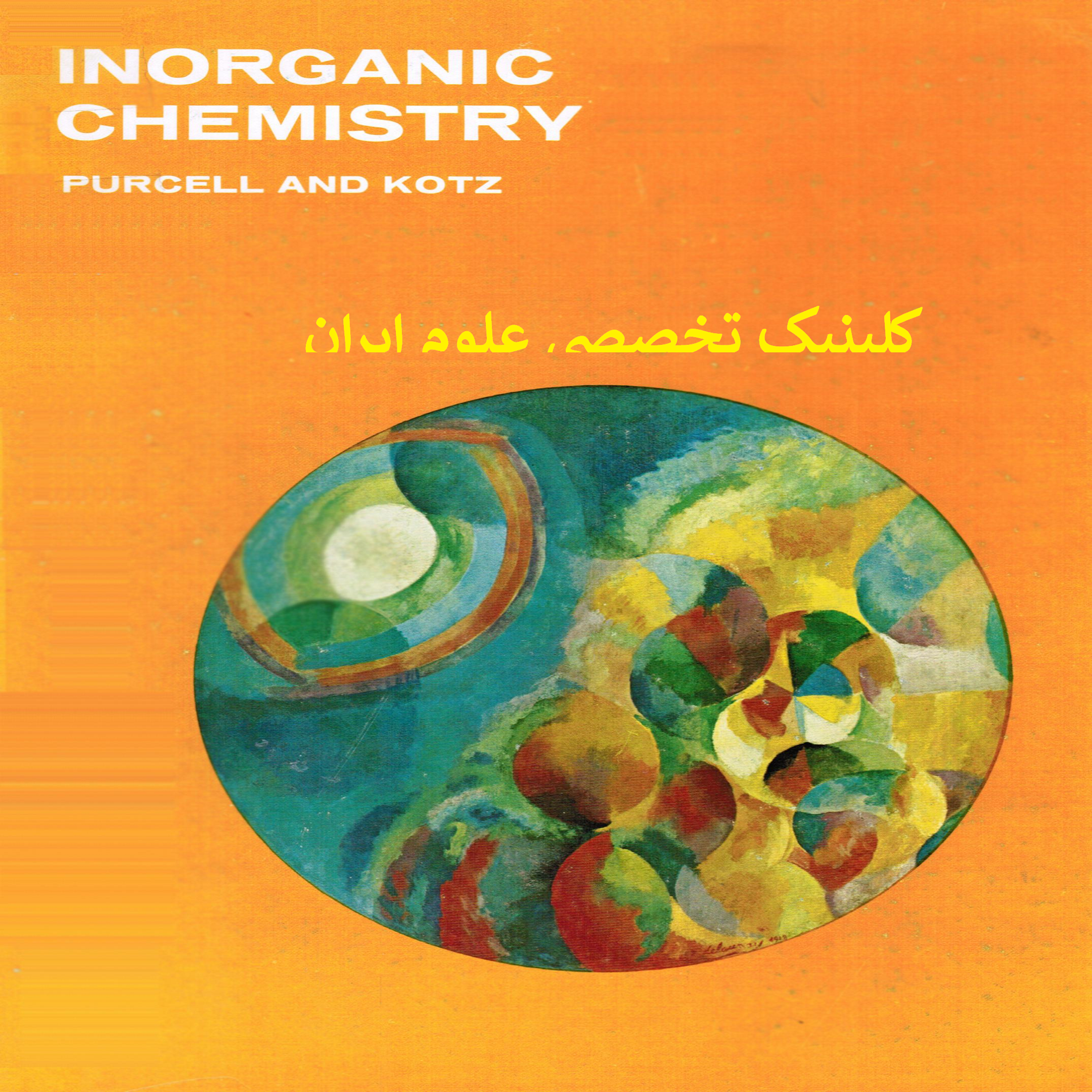
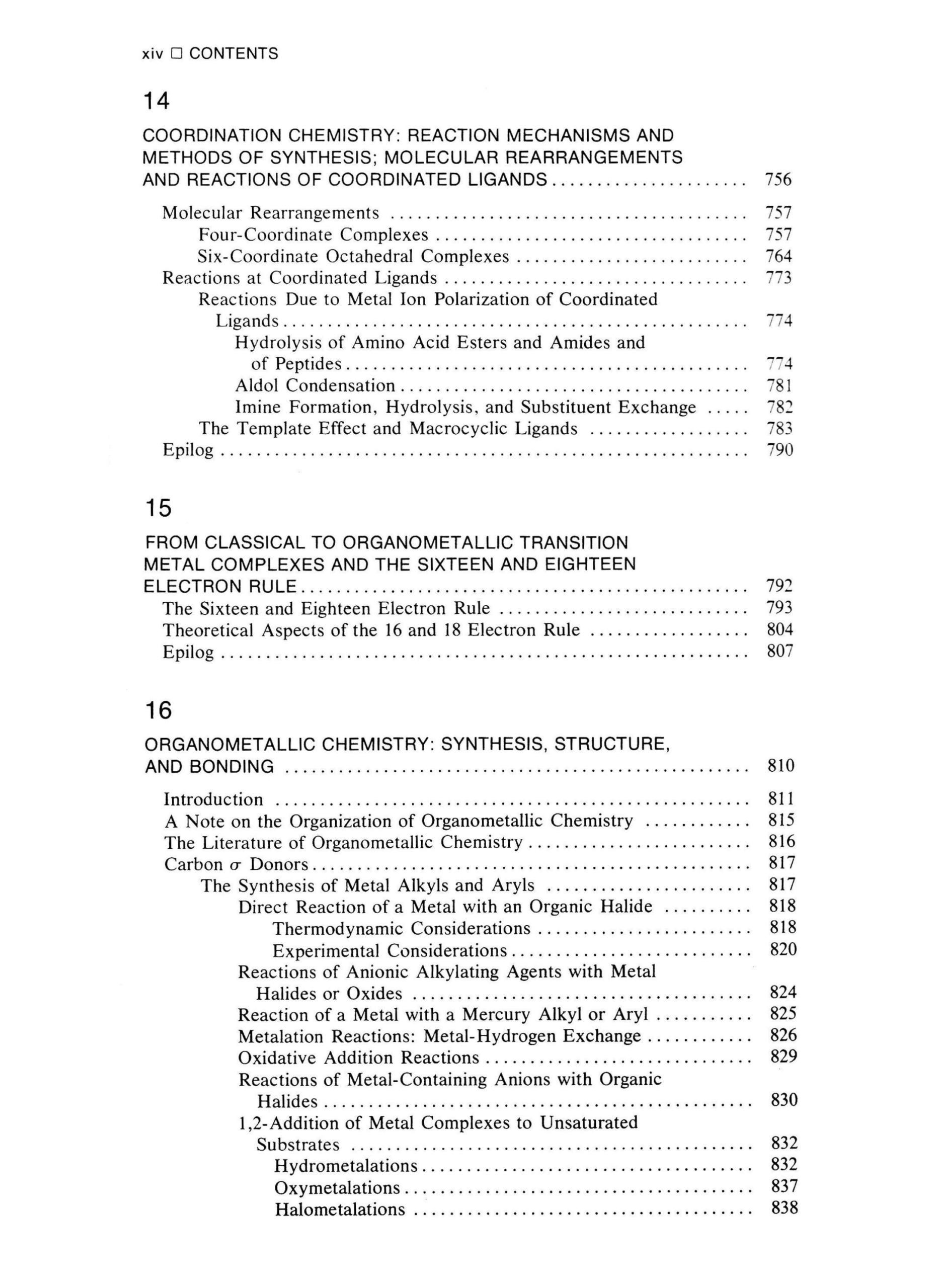
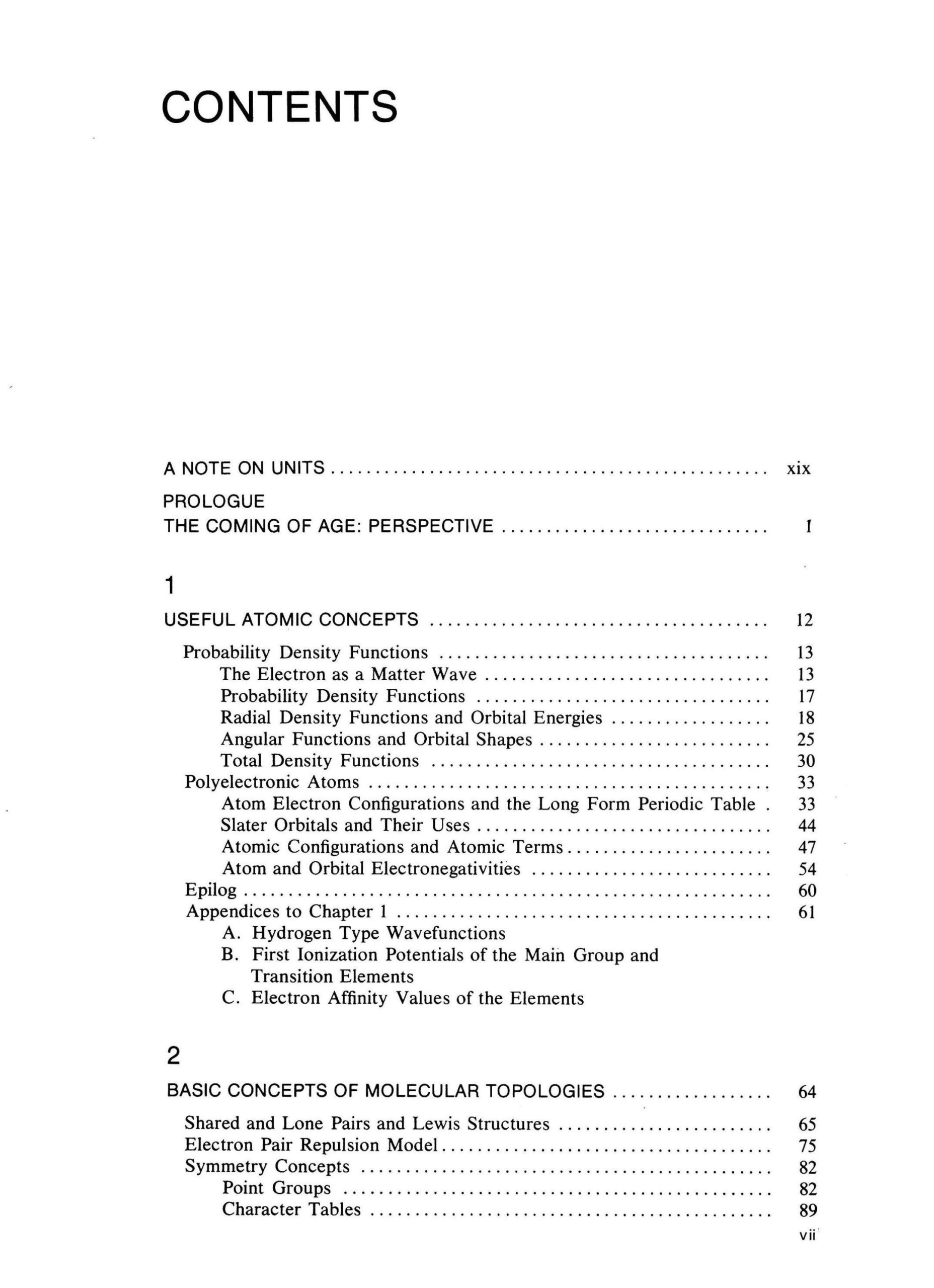
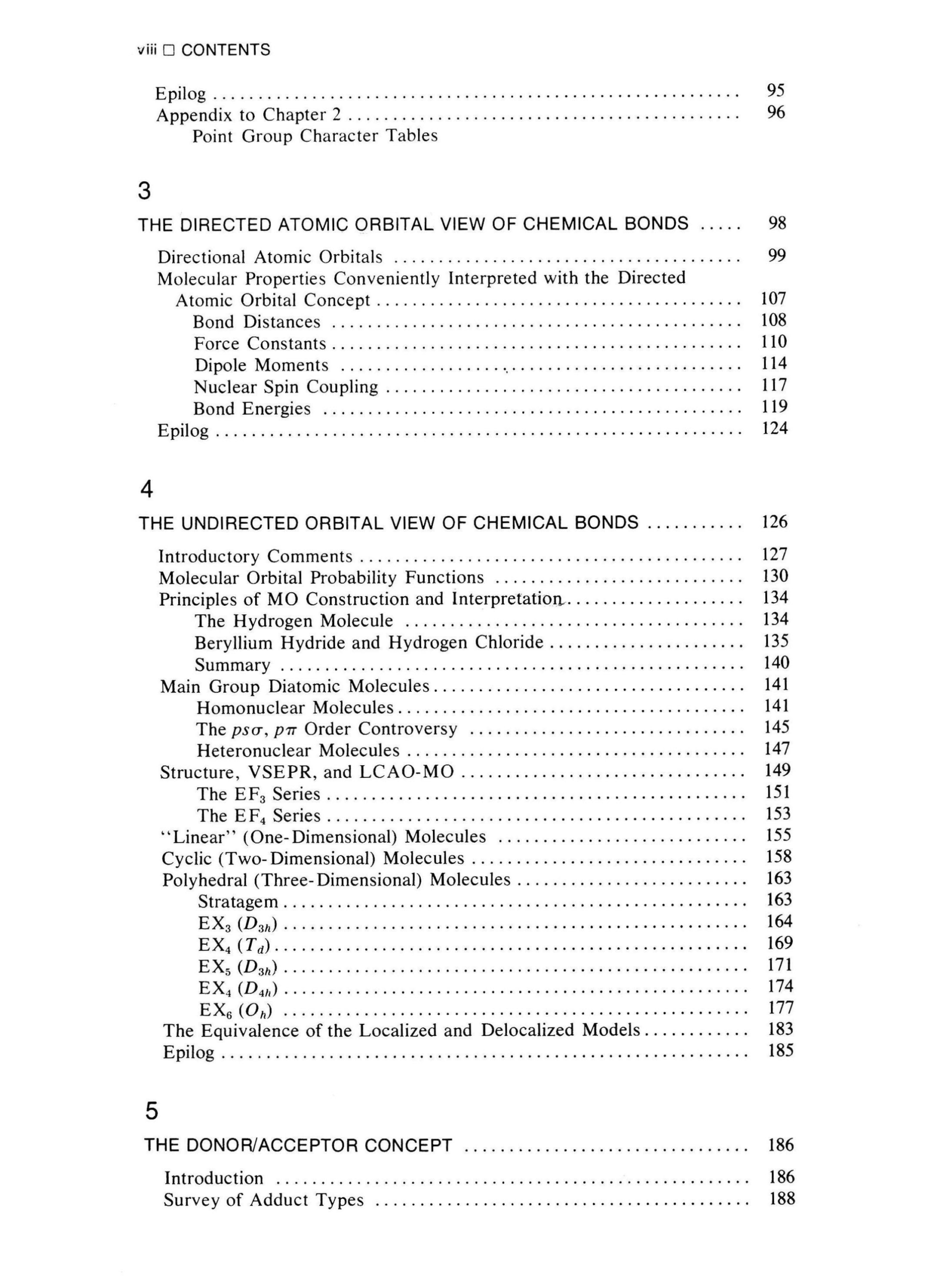
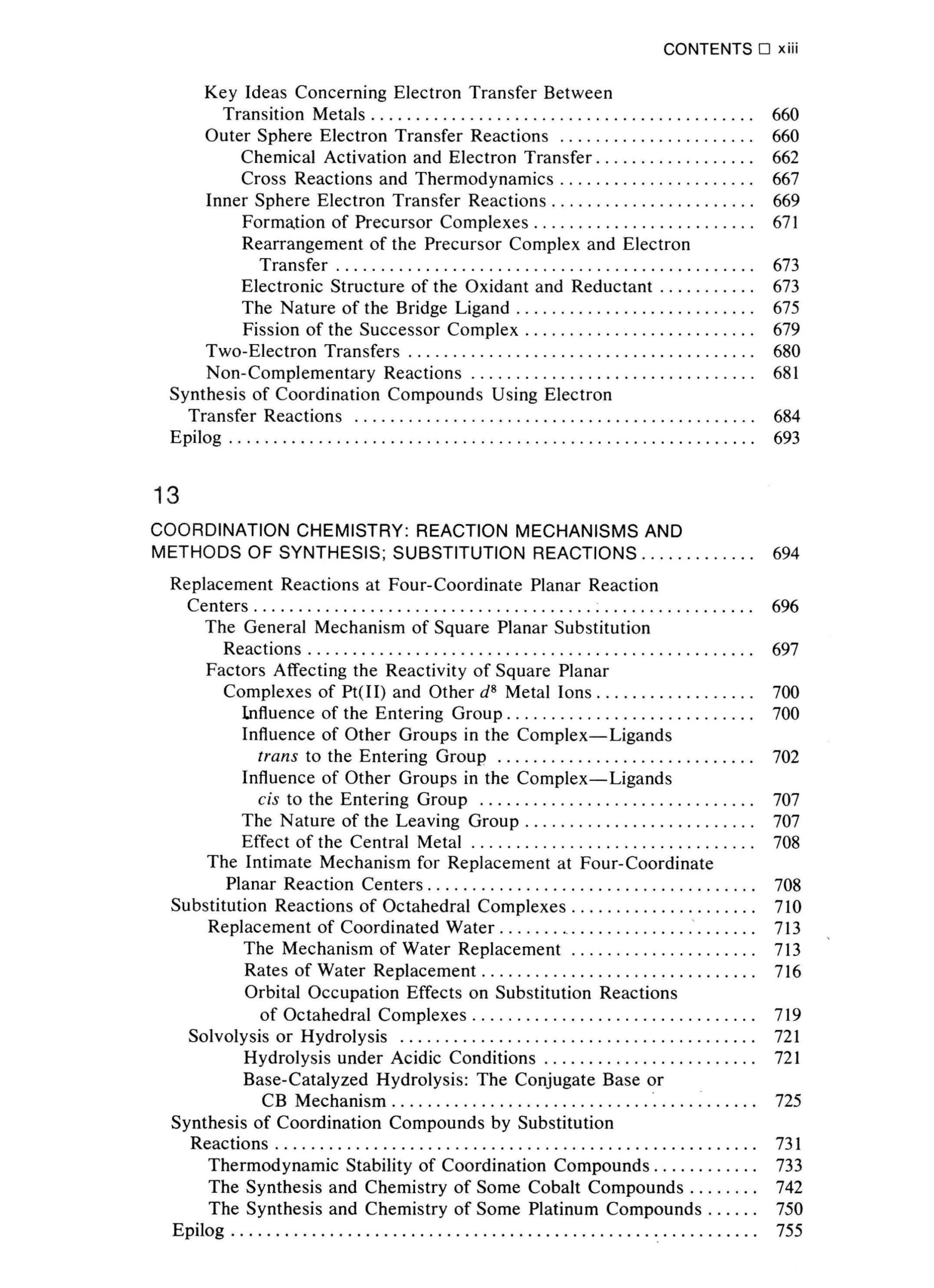
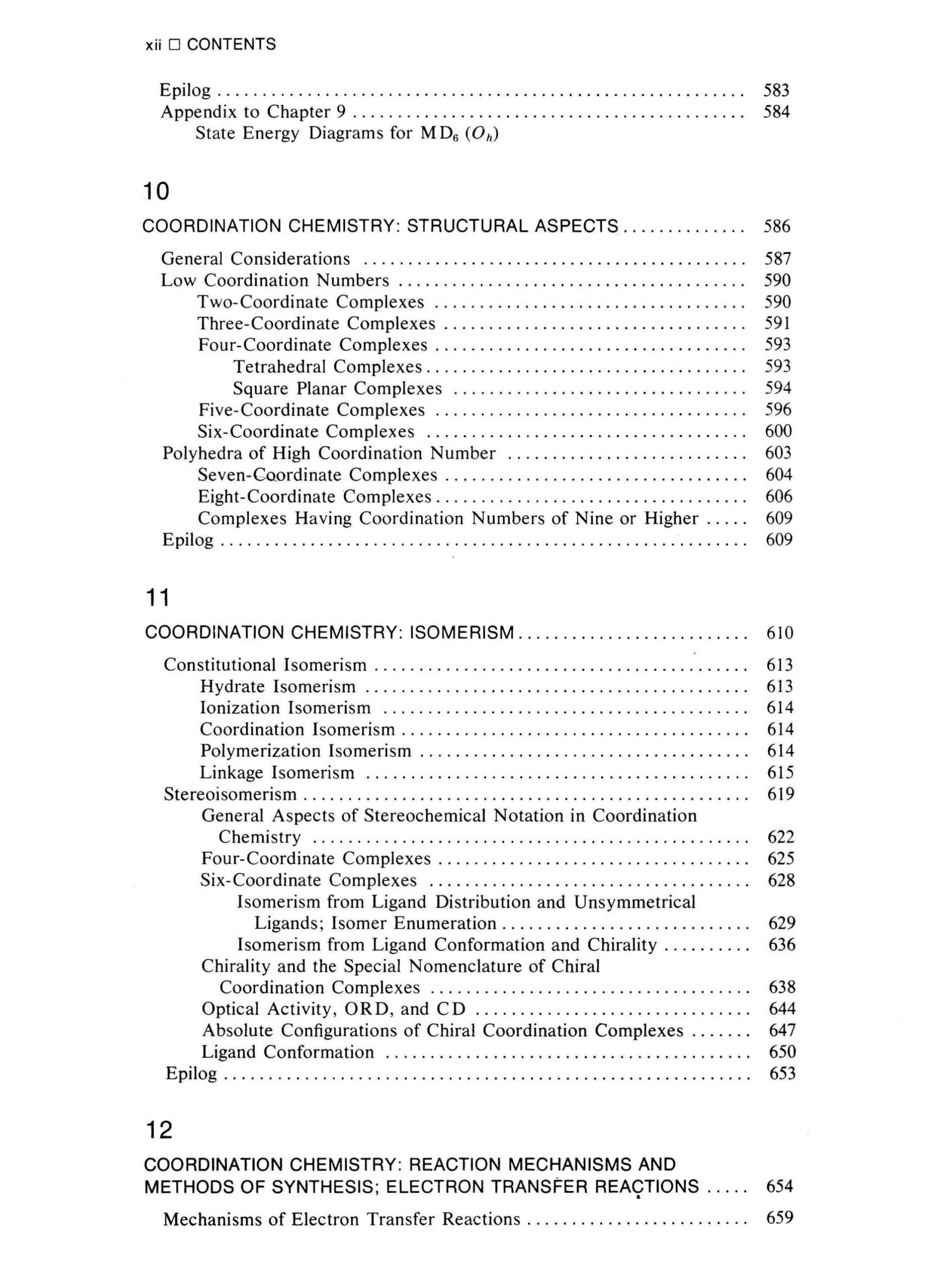

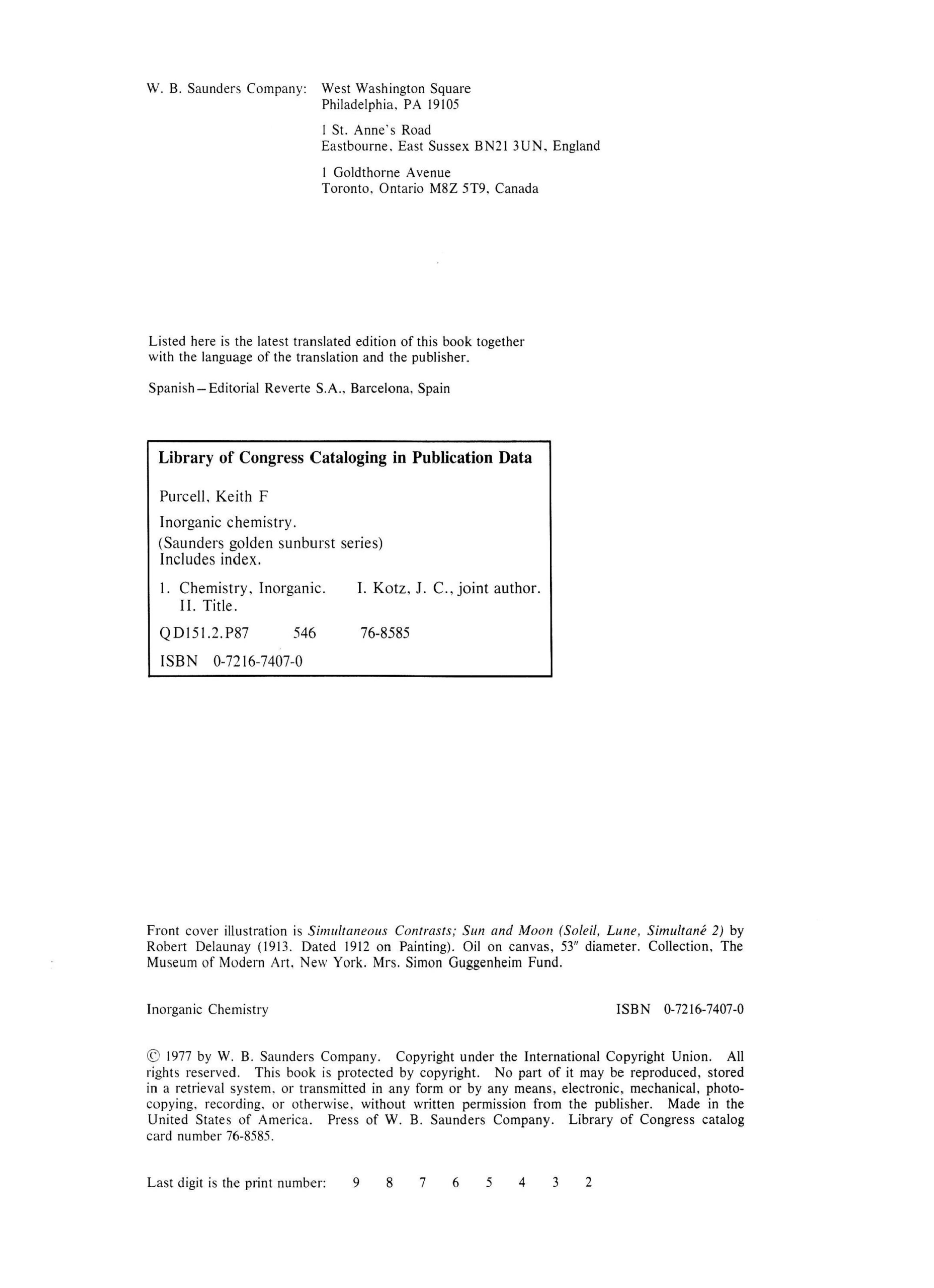
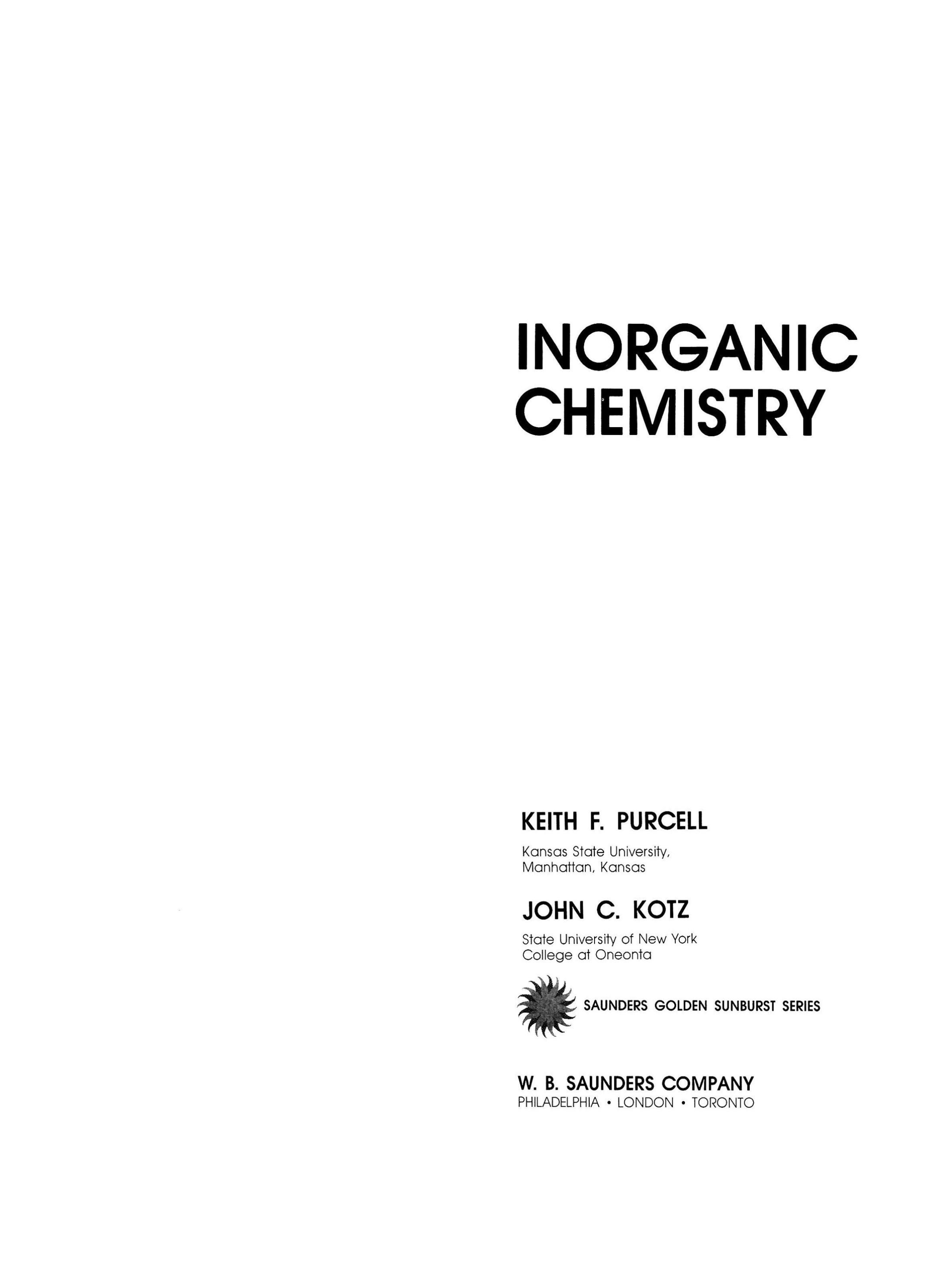
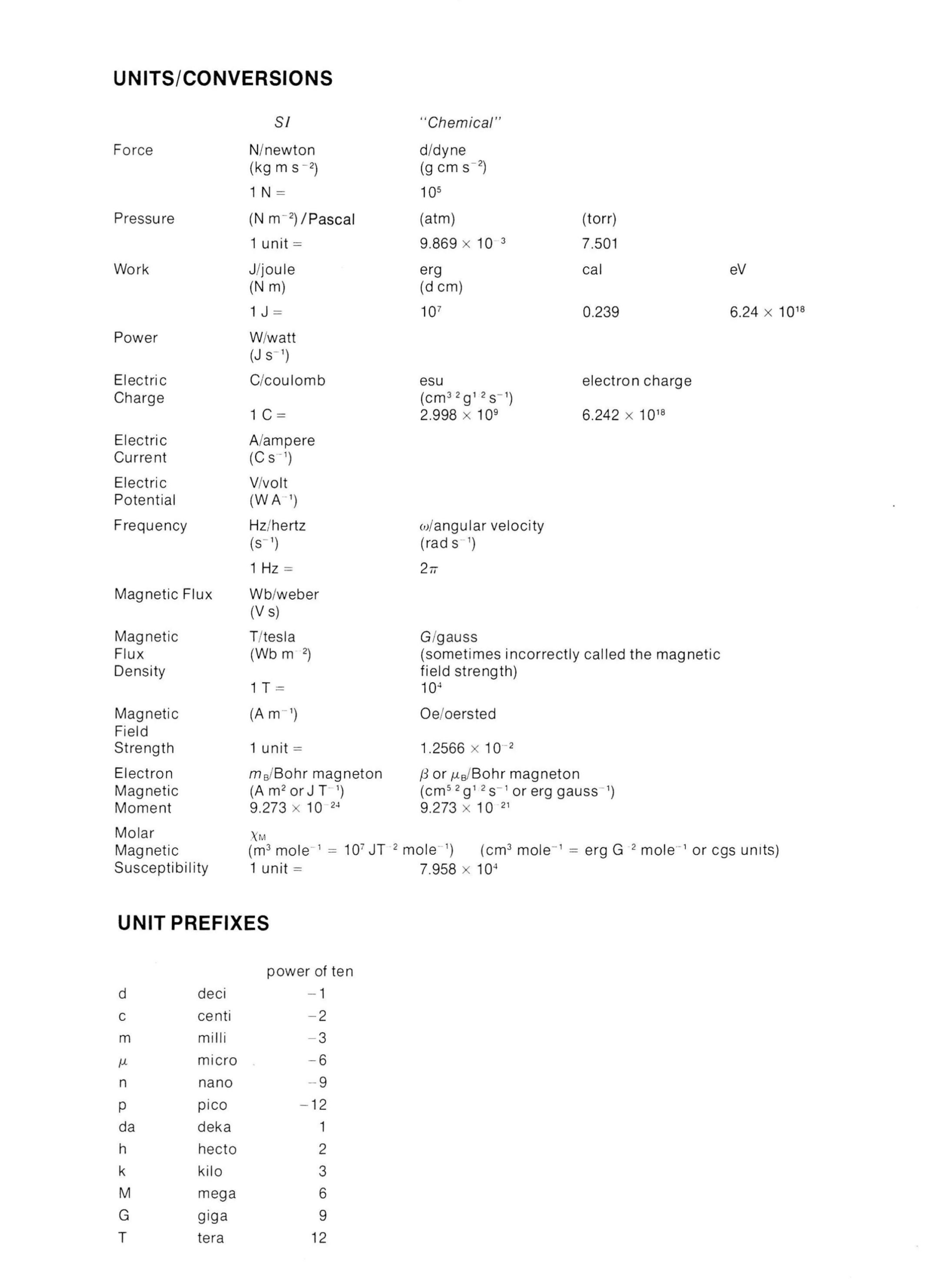
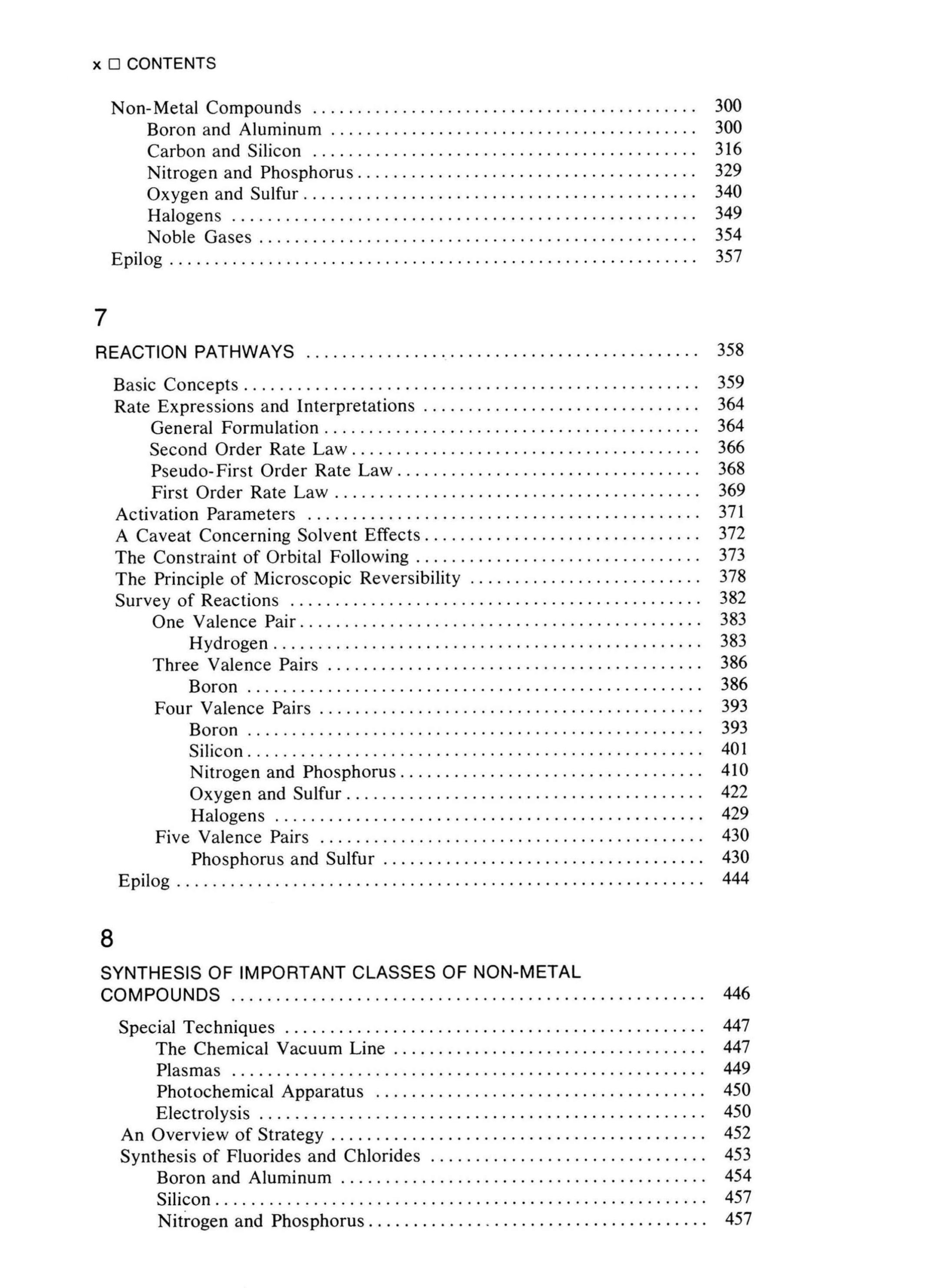
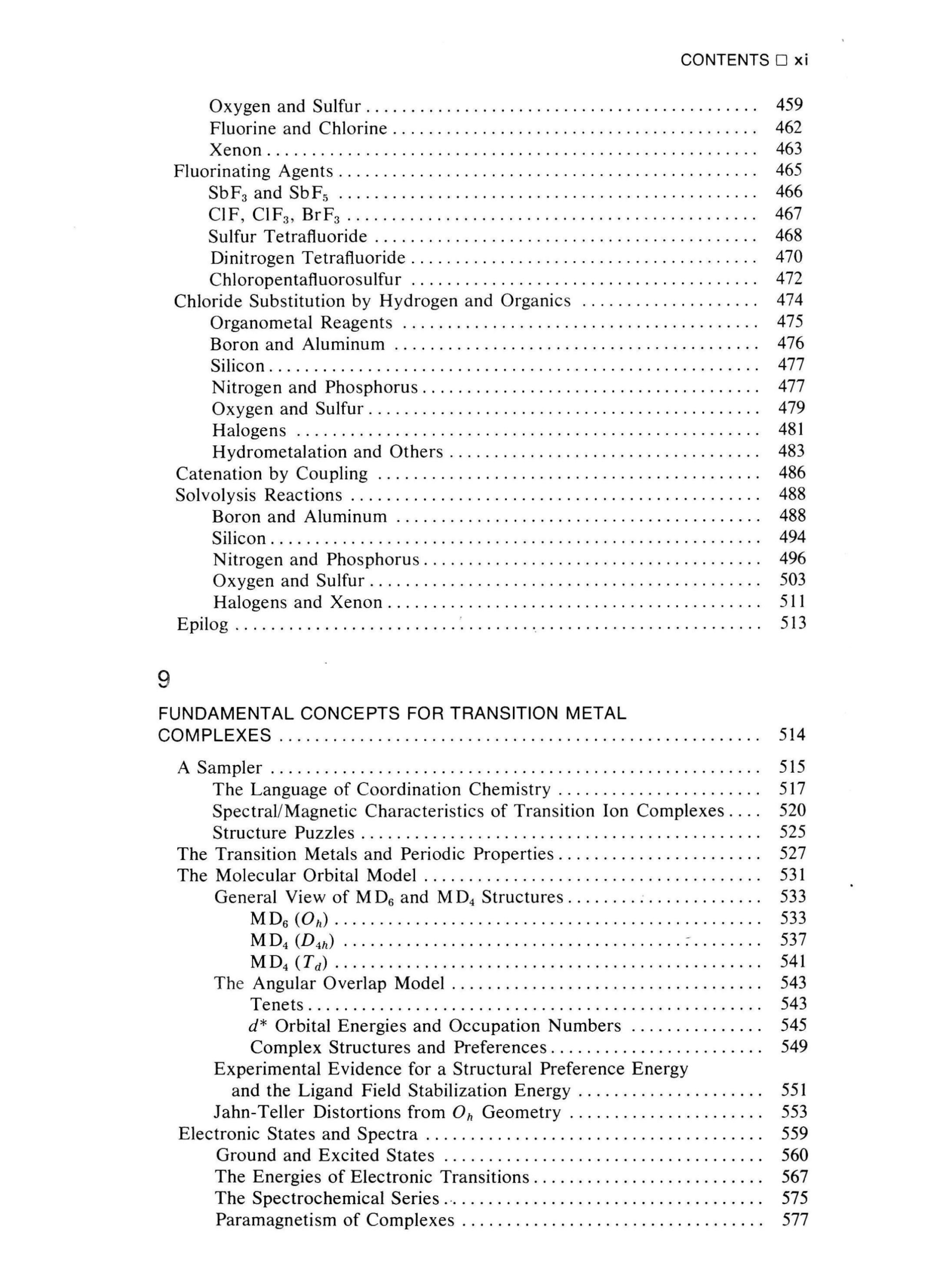

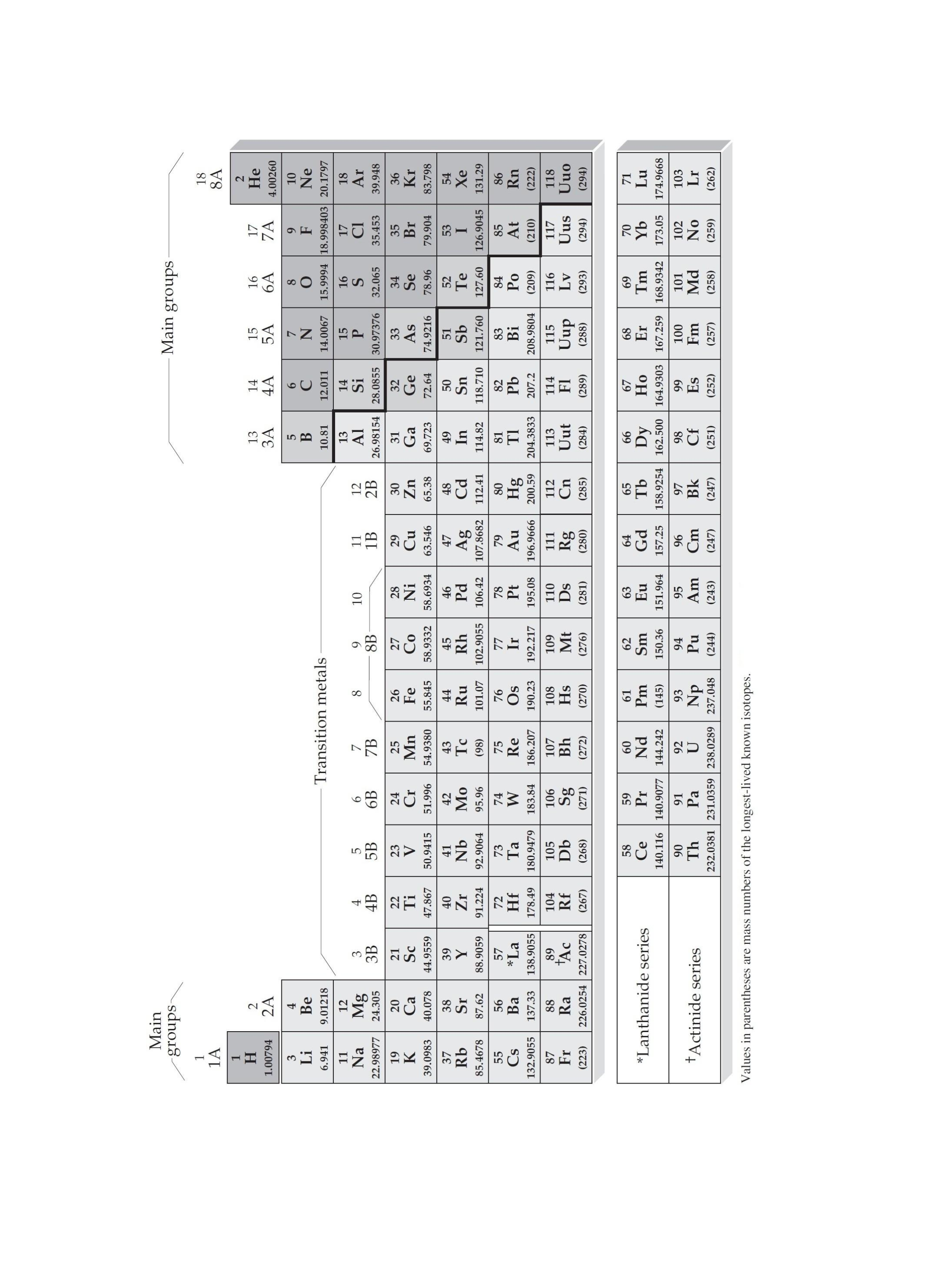
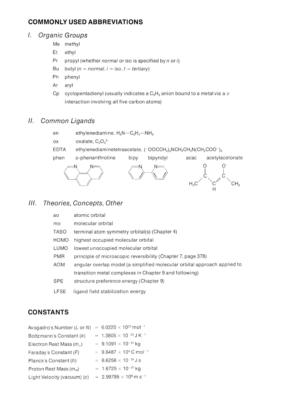



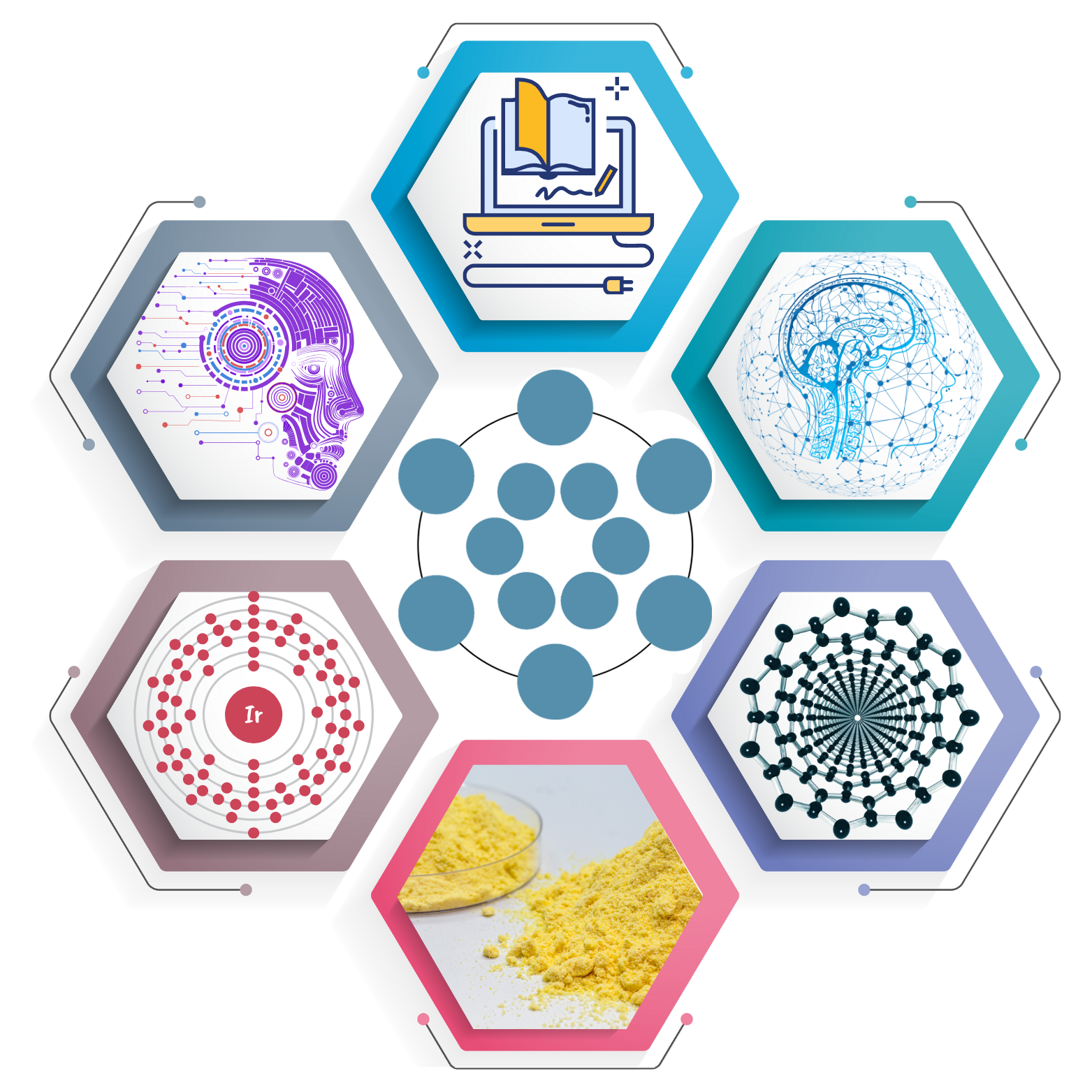
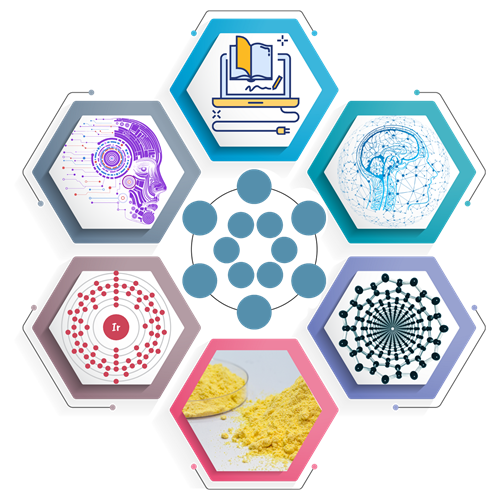
1 review for کتاب شیمی معدنی پارسل – کاتز (purcell-katz)